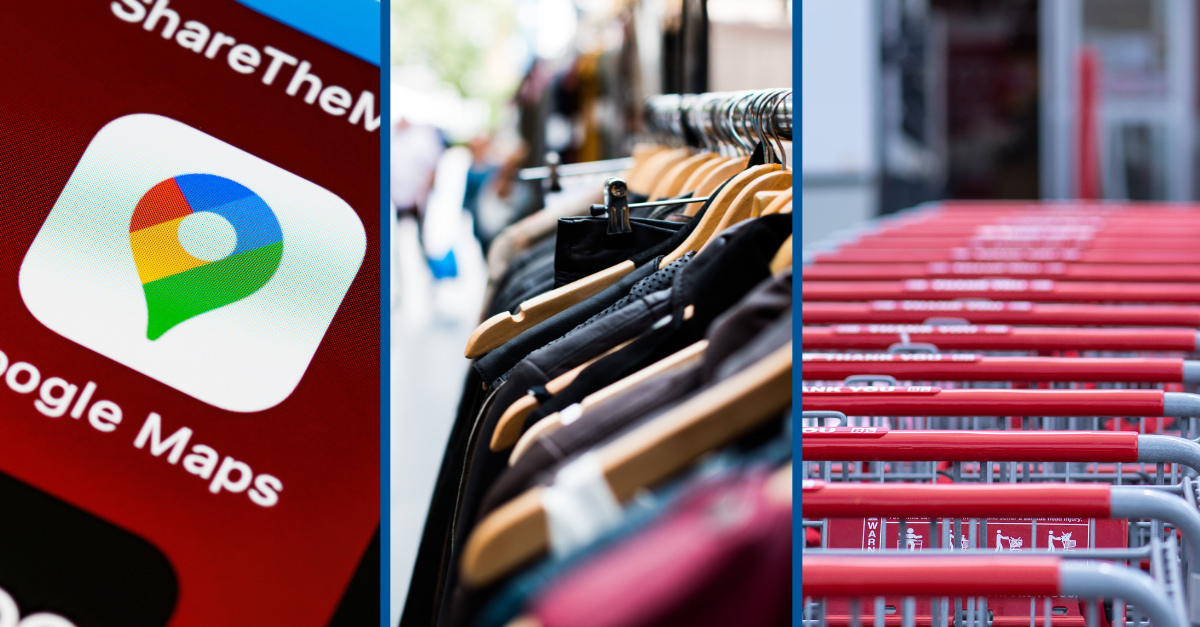In today's ever-changing, fast-paced digital age, retailers are constantly looking for ways to keep customers happy and stay ahead of the competition. Brick-and-mortar stores still have a firm place in operations but to maintain this and provide a good customer experience along the way, it’s important to make it an effective part of your data feedback loop. The solution? Creating a modern store that is truly integrated with digital platforms and experiences for your customers. One way to get closer to being this modern store is by harnessing the power of geolocation and Google Maps. These present advantages that retailers can and should capitalise on if they aren’t doing so already. And what may these advantages be? Read on – we’ll tell you.
A more findable store and products. Let’s get the most obvious advantage out of the way – incorporating Google Maps technology into a retailer’s website and app can make it easier for customers to find your brick-and-mortar stores, whether that is their local branch or one further afield. It helps customers navigate unfamiliar areas or public transport routes, giving them more options to engage with you and explore more of your range. As a plus, customers now have the option to find stores in eco-friendly ways thanks to Google’s new ‘Greenest Route’ options.
The findable fun doesn’t stop at the bricks and mortar though as Google Maps is more than just a mere store locator. It can also be used to share store-level information that helps customers track down the specific products they want in the quantity, colour and size that they want. This is noteworthy because, according to Google, displaying store level information can lead to a 10% increase in online to offline conversion – this is not an insignificant percentage.
The findable fun still doesn’t stop there. Once your customers are in the store, you can use Google Maps technology to create an in-store navigation experience with visual imagery so that they can easily find the products they are seeking in real-time. Satisfied is the customer that finds what they seek!
Personalised recommendations and promotions. A personalised recommendation or promotion goes a long way in enhancing the customer experience and can also lead to a welcome bump in sales. Retailers can take advantage of geolocation and Google Maps technology to effectively make attractive offers to customers while they are in the store. For example, if a customer is browsing for a new pair of running shoes, they may receive a notification on their phone offering a discount on some helpful accessories such as trainer socks or insoles. You don’t even have to wait for customers to enter the store. Thanks to geofencing, you can send notifications about promotions to customers when they are in the vicinity of your store and entice them with an offer they just can’t refuse.
An efficient store layout. A more efficient layout – really? Yes, absolutely. Geolocation technology can help retailers analyse customer traffic patterns to determine which areas of the store are most popular. Once you have this information you can adjust the layout accordingly ensuring that the most popular areas are more immediately accessible. You could take this one step further by cross-referencing this information with your internal movement data and strategically place your high ticket items in these popular areas so that your patrons won’t miss them. This can lead to shorter lines and a more enjoyable shopping experience for your patrons.
Smarter shelves. Another great advantage of geolocation technology is that it facilitates "smart shelves." What are these? Well, “smart shelves” use sensors and location technology to track inventory levels and alert store employees when it is time to re-stock. This can save employees time as they’ll only need to replenish the shelves as necessary and they’ll know which stock they need to lug out from the back. Additionally, it increases the likelihood of customers finding the products they seek, leading to a better overall shopping experience.
Being more sustainable. In this day and age where it’s no longer acceptable to consider sustainability an afterthought, retailers will be pleased to know that geolocation and Google Maps can help them keep it top of mind. How, you say? To highlight one example, retailers can use them to track customer traffic patterns and then adjust its energy usage accordingly, i.e. dim certain lights when not needed or maybe reduce the AC. This can lead to significant energy savings and a reduced carbon footprint.
These are just a few examples but they highlight how retailers can take advantage of the capabilities that geolocation and Google Maps technology offer and move towards creating their own modern stores that provide a solid customer experience.
If this has sparked anything and you are curious about all the ways that Google Maps and geolocation can work for you, we’re here to help! Our specialists have all the knowledge you need to review your current situation and help you overcome your toughest obstacles. Want to get to the next level? Start Now – chat with our specialists today.
